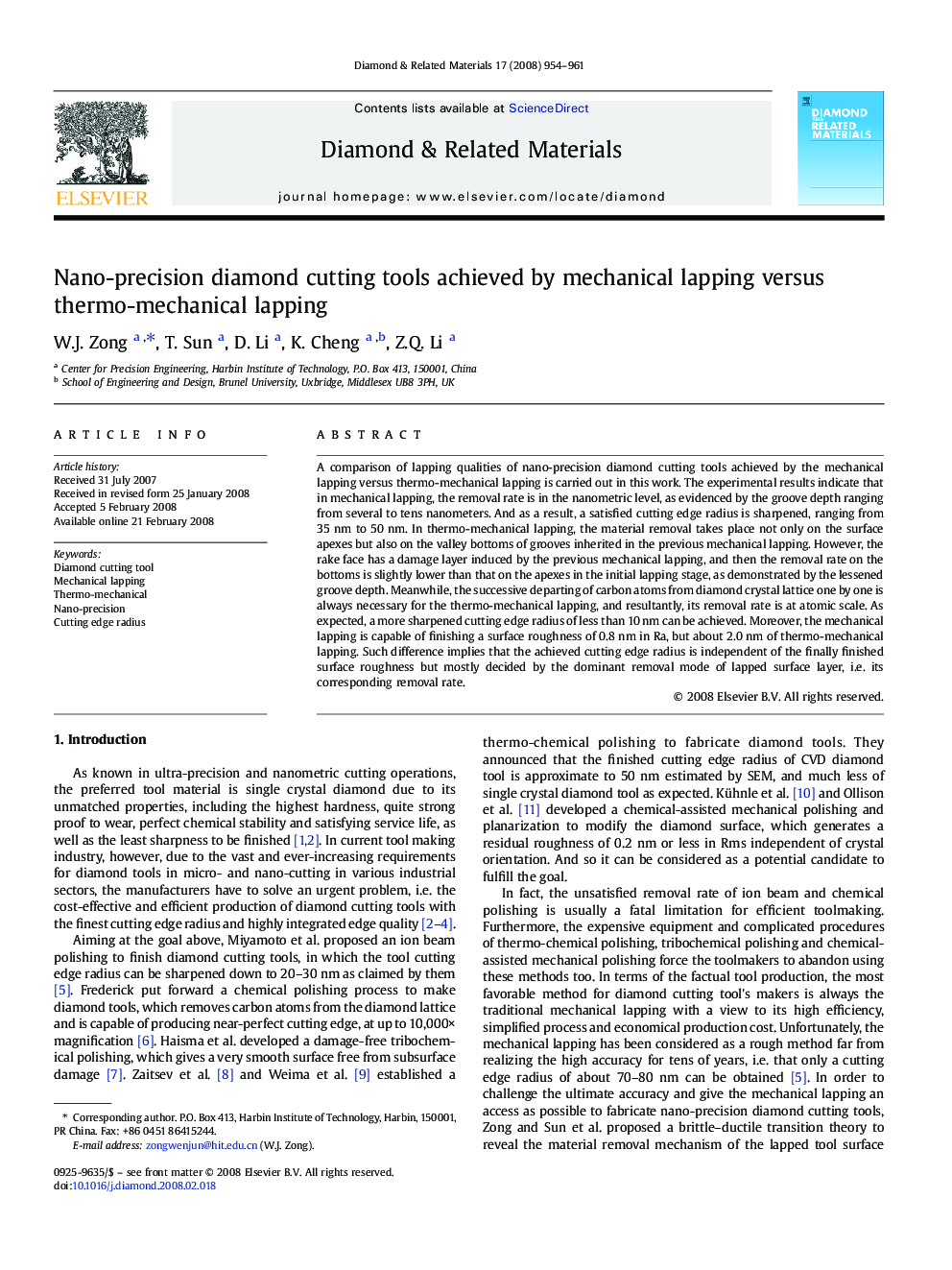| Article ID | Journal | Published Year | Pages | File Type |
|---|---|---|---|---|
| 701100 | Diamond and Related Materials | 2008 | 8 Pages |
A comparison of lapping qualities of nano-precision diamond cutting tools achieved by the mechanical lapping versus thermo-mechanical lapping is carried out in this work. The experimental results indicate that in mechanical lapping, the removal rate is in the nanometric level, as evidenced by the groove depth ranging from several to tens nanometers. And as a result, a satisfied cutting edge radius is sharpened, ranging from 35 nm to 50 nm. In thermo-mechanical lapping, the material removal takes place not only on the surface apexes but also on the valley bottoms of grooves inherited in the previous mechanical lapping. However, the rake face has a damage layer induced by the previous mechanical lapping, and then the removal rate on the bottoms is slightly lower than that on the apexes in the initial lapping stage, as demonstrated by the lessened groove depth. Meanwhile, the successive departing of carbon atoms from diamond crystal lattice one by one is always necessary for the thermo-mechanical lapping, and resultantly, its removal rate is at atomic scale. As expected, a more sharpened cutting edge radius of less than 10 nm can be achieved. Moreover, the mechanical lapping is capable of finishing a surface roughness of 0.8 nm in Ra, but about 2.0 nm of thermo-mechanical lapping. Such difference implies that the achieved cutting edge radius is independent of the finally finished surface roughness but mostly decided by the dominant removal mode of lapped surface layer, i.e. its corresponding removal rate.
